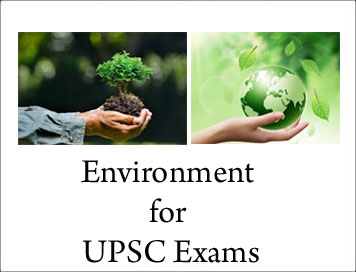(HOT) UPSC Current Affairs 2025 PDF
NEW! The Gist (NOV-2025) | E-BOOKS
SMOG : Environment for UPSC Exams
SMOG : Environment for UPSC Exams
-
The term "smog" was first used in London during the early 1900's to describe the combination of smoke and fog. What we typically call "smog" today is a mixture of pollutants but is primarily made up of ground-level ozone.
-
Ozone can be beneficial or harmful depending on its location. The ozone located high above the Earth in the stratosphere protects human health and the environment, but ground-level ozone is responsible for the choking, coughing, and stinging eyes associated with smog.
-
Smog usually is produced through a complex set of photochemical reactions involving volatile organic compounds (VOC's) and nitrogen oxides in the presence of sunlight that result in the production of ozone.
-
Smog-forming pollutants come from many sources, such as automobile exhausts, power plants, factories, and many consumer products, including paints, hair spray, charcoal starter fluid, solvents, and even plastic popcorn packaging.
-
Major smog occurrences often are linked to heavy motor vehicle traffic, high temperatures, sunshine, and calm winds.
-
In Delhi, smog severity is often aggravated by stubble burning in neighbouring agricultural areas.
-
Smog is made up of a combination of air pollutants that can injure health of people with heart and lung conditions such as emphysema, bronchitis, and asthma and further harm the environment, and cause property damage.
-
This mixture of air pollutants may include the following:
-
Aldehydes
-
Nitrogen oxides, particularly nitric oxide and nitrogen dioxide
-
Peroxyacyl nitrates
-
Tropospheric ozone
-
Volatile organic compounds
-
-
Photochemical smog is the chemical reaction of sunlight, nitrogen oxides and volatile organic compounds in the atmosphere, which leaves airborne particles and ground-level ozone.

